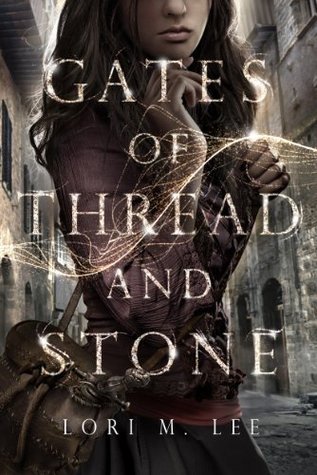 I don't read a lot of contemporary romances. I typically find them...lacking. I don't know why. Maybe I've just picked up one too many that involved a heroine who was incapable of thinking of anything other than what clothing she was going to wear or buy next. Maybe it was just one too many control freak love interests. Maybe it was something else. But when someone posted Royally Screwed to the writing group I'm a member of on Facebook, it looked...charming. So I gave it a try, and I'm glad I did, because charming is exactly what it was.
I don't read a lot of contemporary romances. I typically find them...lacking. I don't know why. Maybe I've just picked up one too many that involved a heroine who was incapable of thinking of anything other than what clothing she was going to wear or buy next. Maybe it was just one too many control freak love interests. Maybe it was something else. But when someone posted Royally Screwed to the writing group I'm a member of on Facebook, it looked...charming. So I gave it a try, and I'm glad I did, because charming is exactly what it was.Kat is barely making ends meet as a caterer in New York when she bumps into Sebastian, Prince of Sezynia, at a party she's working--and avoiding him was the one thing she was supposed to do. She catches his eye, and knows it; she's also determined to not let him get what he wants. She wants to put him in his place a bit, and does so...until she doesn't, and ends up sleeping with him instead. She's determined to leave it at that, but Sebastian isn't. He needs to get married in a hurry if he wants to have a shot at claiming his rightful place as heir to the Sezynian throne, and immediately tries to get Kat to marry him. She says no. He persists. She continues to decline. And then, she decides to say yes--not to marrying him, but to being his matchmaker and finding someone else for him to marry.
You can probably guess how this goes.
I liked Kat, and I liked Sebastian, and I liked the supporting characters, for the most part. A few of them had some catchphrases that got really annoying really fast (like Kat constantly telling Sebastian that she's "too hot to handle") but overall I think there was a good dynamic, without too many superfluous characters taking up page time. Kat's relationship with her brother is a driving force in the book, which I thought was well done. Sebastian is kind of a jerk, but in an adorable way, and he's always respectful of Kat. He persists in asking her to marry him, but most of the time he doesn't really mean it, and when they start to get physical and she tells him "no" for any reason, he backs off. That's good. The story was, as I said, charming--a modern day Ruritanian romance, and I can definitely see Sezynia being next-door neighbors with The Princess Diaries' Genovia.
I pretty much devoured this, and didn't see any huge plot problems along the way. I did find a few things that baffled me. For example, Seimas talks about Kat being a lifeguard and swim instructor (she carries a lifeguard whistle and can teach kids the breaststroke) but it's never actually mentioned that she works as one, though her work as a caterer is mentioned multiple times. At the beginning, it's suggested that Kat's brother works at the same business, but we never see any evidence of this. There weren't big plot holes, but there were little continuity problems that could definitely be tightened up. Royally Screwed could also really, really do with another serious round of line edits. Seimas has a penchant for Random Capitalization, which comes across as rather 18th century, and also has a tendency to misuse words, particularly homophones or words that sound similar but not exactly the same. For example: Sebastian's sister finds Kat wondering the corridors (should be wandering) and his grandmother thinks (or Sebastian says she thinks) that Kat's hips aren't wide enough to bare children. I hope no children are being bared, though if they're considering Kat bearing children, that's another issue entirely. Seimas also really needs a refresher in how commas work in dialogue, and maybe a bit of brushing up on quotation marks, too. Overall, I think another round of edits could have immensely improved this as a quality product. The plot is solid, but the line edits are desperately needed.
And I'm not a huge fan of the cover (it seems a little middleschool to me, and a middleschool novel this most decidedly is not) but that might just be my personal preference. Seimas could benefit from making her name a little larger and easier to read, though, regardless of the rest of the cover design--the author's name should always be prominent on a cover.
3.5 stars out of 5--it's strong in plot and characters, but needs some polish overall.














